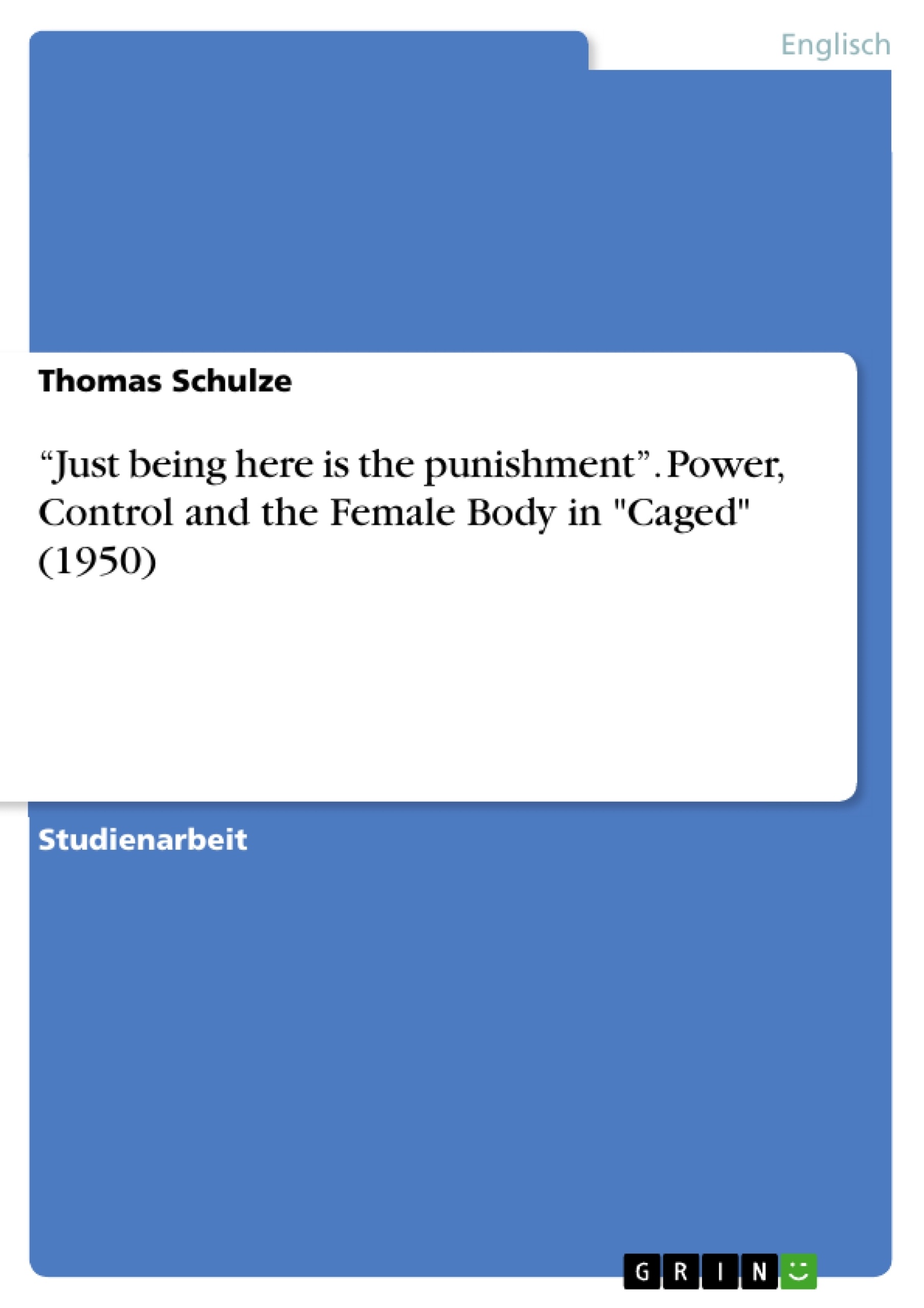In the movie "Caged", imprisonment is strongly characterized by corporal punishment, surveillance and (bodily) subjection. For that reason, this paper will discuss in which ways and to what extent the female prisoner's body is subjected to disciplinary modes of action and techniques in "Caged" and how they are related to the exercise of power and control within the punitive apparatus.
Based on this thesis, I will discuss three main questions: How does the movie's narrative (re)produce perceptions of female delinquency? In which ways imposes prison coercion upon and control over the female body? How, why and to what extent does the punitive apparatus make ‘use’ of the female delinquent’s body in "Caged"?
In the first part of this paper I will refer to narrative moments, motifs and genre conventions shared by the women-in-prison melodramas, give a short summary of "Caged" and discuss the cinematic production, representation and reproduction of female delinquency in the film by citing three major and influential readings of "Caged" within the research discourse.
The second chapter will focus on Michel Foucault's concept of delinquency, as part of his cultural-anthropological study "Discipline and Punish: The Birth of the Prison", refer to dressage and discipline as disciplinary ‘techniques’ and show how observation, surveillance and control over the female body are put into effect through the disciplinary gaze.
Finally, the third part will deal with the way in which prison establishes a grasp on the female body, show how the punitive apparatus thereby creates docile bodies through training of behavior or work and finally conclude by discussing to which extent corporal punishment is used to intensify prison’s claims to exercise power and control over the female delinquent’s body in "Caged".
Inhaltsverzeichnis
- Introduction
- Power, Control and the Female Body in Caged (1950)
- Women-in-prison narratives, Caged and the female delinquent
- (Female) delinquency, power and disciplinary gaze
- Power, control and the female delinquent's body in Caged
- Summary
Zielsetzung und Themenschwerpunkte
Diese Arbeit analysiert die Darstellung der weiblichen Gefangenen im Film „Caged“ (1950) und untersucht, wie die weibliche Körperlichkeit im Kontext des Strafvollzugs zur Ausübung von Macht und Kontrolle eingesetzt wird.
- Die Darstellung weiblicher Delinquenz in „Caged“
- Die Anwendung disziplinärer Techniken zur Kontrolle des weiblichen Körpers im Gefängnis
- Die Rolle des Strafvollzugs bei der Herstellung von „dozilen“ Körpern
- Die Beziehung zwischen Macht, Kontrolle und der weiblichen Körperlichkeit in „Caged“
- Die Bedeutung von Michel Foucaults Werk für die Analyse von „Caged“
Zusammenfassung der Kapitel
Das erste Kapitel beleuchtet die narrative Struktur von Frauen-im-Gefängnis-Filmen, die Produktion und Rezeption von „Caged“ sowie die Darstellung weiblicher Delinquenz im Film. Das zweite Kapitel analysiert Michel Foucaults Konzept der Delinquenz und untersucht die Anwendung von disziplinären Techniken wie Beobachtung und Kontrolle im Strafvollzug. Das dritte Kapitel befasst sich mit den Mechanismen, die das Gefängnis zur Kontrolle des weiblichen Körpers einsetzt, und der Rolle von körperlicher Bestrafung in diesem Kontext.
Schlüsselwörter
Die Arbeit befasst sich mit den Themen Macht, Kontrolle, weibliche Körperlichkeit, Strafvollzug, Disziplin, Delinquenz, Beobachtung, Surveillance, „docile bodies“, Frauen-im-Gefängnis-Filme, „Caged“ (1950), Michel Foucault, Panopticon, Dressage.
- Quote paper
- B.A. Thomas Schulze (Author), 2015, “Just being here is the punishment”. Power, Control and the Female Body in "Caged" (1950), Munich, GRIN Verlag, https://www.grin.com/document/320146



